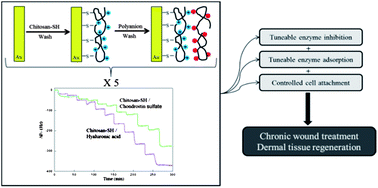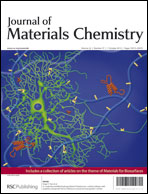GAGs-thiolated chitosan assemblies for chronic wounds treatment: control of enzyme activity and cell attachment
Abstract
Multilayered polyelectrolyte coatings comprising thiolated

- This article is part of the themed collection: Materials for biosurfaces

 Please wait while we load your content...
Please wait while we load your content...